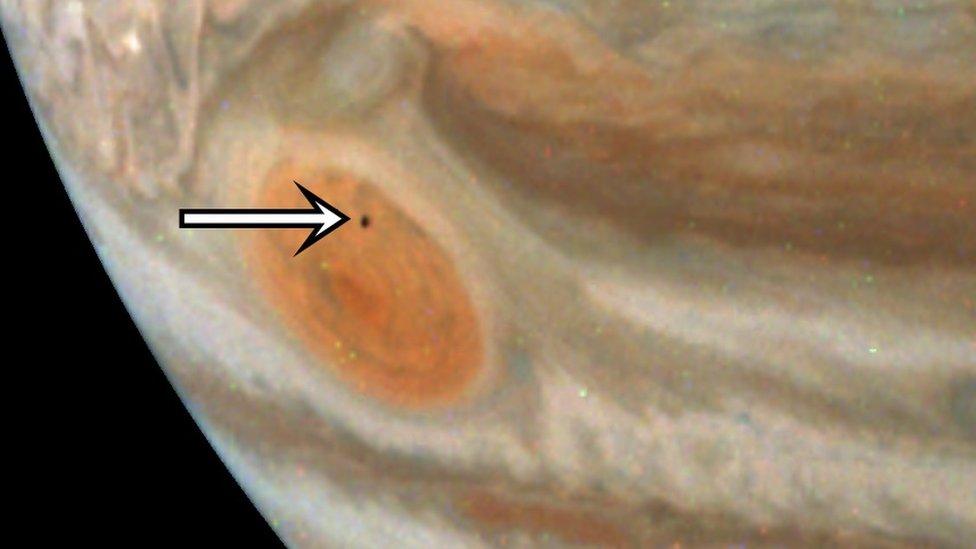Nasa's Juno spacecraft shares pictures of Jupiter's tiny moon Amalthea
- Published
- comments

Meet Amalthea, Jupiter's tiny moon
A Nasa spacecraft has sent back some incredible images of a tiny moon in front of the solar system's biggest planet - Jupiter.
The tiny moon is called Amalthea and has a radius of just 52 miles (84 kilometres), that's around 20 times smaller than our own Moon.
But unlike our Moon, Amalthea is shaped a bit like a potato rather than a round sphere.
Although it is small it is quite remarkable, scientists say it's the reddest object in the solar system and gives out more heat than it receives from the Sun.
A moon is a celestial body or satellite that makes an orbit around a planet.The definition of a moon doesn't involve size. So, a 'moon' could be a small rock or it could be as large as a planet.
The images of Amalthea were sent back by Nasa's Juno spacecraft which blasted off back in 2011 to study Jupiter.
It's part of a mission to help experts learn more about the planet and how the solar system began.
Juno was supposed to finish its mission in July 2021, but that end date was extended until September 2025 so it can conduct more research.
After its mission is completed it will intentionally dive towards the planet to be swallowed by Jupiter's stormy atmosphere.
So far the mission has made a range of discoveries about the planets internal structure and its magnetic field.
Juno will orbit the giant gas planet Jupiter
Nasa's Juno spacecraft captured the latest images on its 59th close flyby of the planet, with pictures showing the tiny moon in front of Jupiter's Great Red Spot.
The spacecraft will have been around 165,000 miles (265,000 kilometres) above Jupiter's clouds when it took the snaps - so it must have a pretty impressive camera!
Amalthea circles Jupiter inside the orbit of Io - one of Jupiter's other moons.
Research published earlier this year suggest Io is the most volcanically active place in the solar system.
- Published28 April 2021
- Published7 March 2018
- Published3 April
